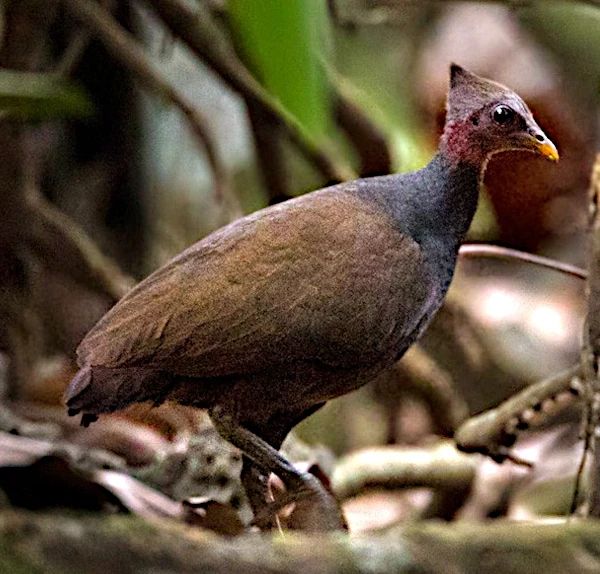
Image description: Papua New Guinea megapodes occupy natural habitats of subtropical forests and wetlands and are predominantly brown or black in colour. Its head is paler than its body and it has a grey crest, a yellow bill and long, dull yellow legs.
In the archipelago of Papua New Guinea, at the heart of the caldera of the extinct Bosavi volcano, a fascinating natural spectacle unfolds. The Megapodes (Megapodius affinis), remarkable birds, use a unique technique to ensure the survival of their eggs. These birds dig into the hot ashes of the volcano to bury their oval eggs.
This nesting method is particularly ingenious. The still-hot volcanic ashes provide a constant source of heat that allows the eggs to incubate. The Megapodes thus take advantage of natural geothermal energy to maintain an ideal temperature for the development of their offspring.
Once buried, the eggs benefit from the heat of the ashes, allowing optimal incubation without requiring the constant presence of the parents. This strategy frees the Megapodes from the constraints of traditional incubation, giving them more time to feed and protect themselves from predators.
The caldera of Mount Bosavi, with its unique conditions, provides an ideal habitat for these birds. The volcanic ashes, rich in minerals, also promote the growth of vegetation, thus providing an abundant source of food for the Megapodes and other animal species.
The Megapodes of Papua New Guinea are a remarkable example of species adaptation to their environment. Their nesting technique in the hot ashes of the Bosavi volcano testifies to the ingenuity of nature and the ability of animals to make use of available resources to ensure their survival.